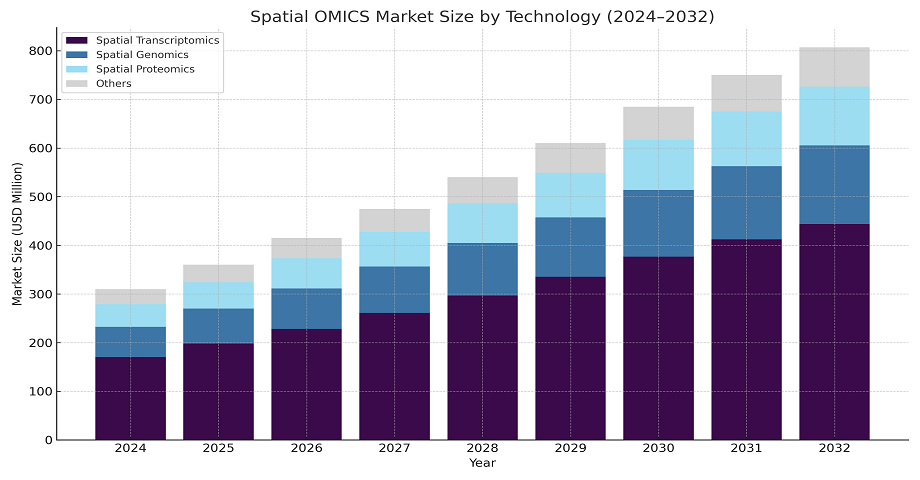Notifications

4 minutes, 17 seconds
-31 Views 0 Comments 0 Likes 0 Reviews

What is spatiotemporal omics?
Spatiotemporal omics is an advanced approach in molecular biology that integrates spatial and temporal dimensions into multi-omics analyses (e.g., genomics, transcriptomics, proteomics, metabolomics). This technique enables the mapping of biomolecular changes within the precise anatomical context of tissues over time, offering unprecedented resolution into how cellular behavior evolves in health and disease. It has transformative potential in areas such as oncology, neuroscience, immunology, and developmental biology, driving innovation in precision medicine and systems biology.
The Spatio OMICS Market is expected to grow at a significant rate due to advancements in sequencing and imaging technologies, and expansion of research and development funding.
Which technologies are driving the spatiotemporal omics market?
Spatial Transcriptomics – Maps gene expression in tissue context
Spatial Proteomics – Visualizes protein distribution
Mass Spectrometry Imaging (MSI) – Detects molecules with spatial precision
Single-Cell RNA Sequencing (scRNA-seq) – Captures temporal changes at cell level
Multiplexed Imaging (e.g., CODEX, MIBI) – Analyzes many biomarkers in tissues
What are the current limitations or challenges in spatiotemporal omics adoption?
High Technology Costs: The advanced instruments and reagents required for spatiotemporal omics are costly, making adoption challenging for many academic and smaller research institutions. This financial barrier limits access despite rising interest in spatial biology.
Complexity of Data Analysis: Spatiotemporal omics generate vast, high-dimensional datasets combining molecular and imaging data. Processing this information demands specialized software, computational infrastructure, and bioinformatics expertise. Without these, deriving actionable insights can be slow and resource-intensive.
Limited Skilled Workforce and Infrastructure: The field requires interdisciplinary skills in molecular biology, spatial imaging, and data science. However, a shortage of trained professionals and inadequate infrastructure in many regions slows down adoption and implementation across research and clinical environments.
To get detailed information on Spatiotemporal OMICS Industry, Click here!
Which regions are investing heavily in spatiotemporal omics research and development?
North America
Europe
Asia-Pacific
Latin America
Who are the leading players in the spatiotemporal omics industry?
10x Genomics
NanoString Technologies
Akoya Biosciences
Bruker Corporation
Vizgen
RareCyte
For a comprehensive analysis, refer to the full report by BIS Research: Spatiotemporal OMICS Market.
End Use Insights
Innovation Strategy: It identifies opportunities for market entry and technology adoption, helping organizations stay ahead of the competition while meeting evolving customer demands.
Growth Strategy: The report outlines targeted growth strategies to optimize market share, enhance brand presence, and drive revenue expansion.
Competitive Strategy: It evaluates key competitors and offers practical guidance for maintaining a competitive edge in a rapidly evolving market.
Conclusion
The market for spatiotemporal omics is expected to increase significantly due to growing applications in clinical and research settings, growing need for precision medicine, and technical advancements. To keep a competitive edge, major competitors in the market are always improving their product offerings, investing in R&D, and inventing. Despite obstacles like exorbitant expenses and intricate data, the amalgamation of artificial intelligence and multi-modal platforms offers significant prospects. Organizations that use these insights can take advantage of development opportunities, overcome obstacles, and set themselves up for long-term success in the ever-changing spatiotemporal omics landscape.
#health #healthcare Spatiotemporal Omics Market Spatiotemporal Omics Industry Spatiotemporal Omics Report

